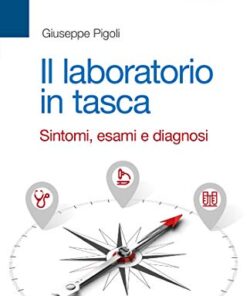The Benefits of Keeping a Laboratory Book: A Guide for Scientists
Order Your Laboratory Books Now!
Are you looking for the best laboratory books to help you with your research? Look no further than SurgeryBook.net! Our selection of laboratory books is comprehensive and up-to-date, so you can be sure that you are getting the most accurate information available. We have a wide variety of topics covered, from basic biology to advanced medical techniques. Plus, our books are written by experts in the field, so you can trust that the information is reliable. So don’t wait any longer – order your laboratory books today and get the knowledge you need to succeed! Visit SurgeryBook.net now to find the perfect laboratory book for you!
Laboratory Books
Laboratory Books
Phlebotomy: Worktext and Procedures Manual, 5th Edition (Original PDF from Publisher)
Laboratory Books
Laboratory Books
Laboratory and Diagnostic Testing in Ambulatory Care, 4th Edition (Original PDF from Publisher)
Laboratory Books
Rossi’s Principles of Transfusion Medicine, 6th edition (Original PDF from Publisher)
Laboratory Books
Laboratory Books
Laboratory Books
Quick Review Cards for Medical Laboratory Science, 3rd Edition (High Quality Image PDF)
Laboratory Books
Clinical Laboratory Methods: Atlas of Commonly Performed Tests (Original PDF from Publisher)
Laboratory Books
Essentials of Cytogenetic and Molecular Cytogenetic Laboratory Testing (Original PDF from Publisher)
Laboratory Books
Laboratory Books
Tietz Textbook of Laboratory Medicine, 7th edition (True PDF)
Laboratory Books
Laboratory Books
Mosby’s Canadian Manual of Diagnostic and Laboratory Tests, 2e (Original PDF from Publisher)
Laboratory Books
Laboratory Books
Routine Blood Results Explained (Original PDF from Publisher)
Introduction
This guide provides an overview of the benefits of keeping a laboratory book for scientists. A laboratory book is an essential tool for any scientist, as it helps to document experiments and results in an organized manner. Keeping a laboratory book can help scientists save time, improve accuracy, and ensure that data is properly recorded and stored. Additionally, having a laboratory book can help scientists keep track of their progress and make sure that all experiments are conducted in accordance with safety protocols. This will provide an overview of the advantages of keeping a laboratory book and how to get started.
The American Bison, also known as the buffalo, is a large mammal that is native to North America. It is the largest land mammal in the United States and Canada, and is an iconic symbol of the American West. The bison is a member of the Bovidae family, which includes cattle, goats, sheep, and antelopes.
Bison are typically brown or black in color, with a shaggy coat of fur that helps them stay warm in cold climates. They have a large head with short horns, a humped back, and a long tail. Adult males can weigh up to 2,000 pounds and stand up to 6 feet tall at the shoulder. Females are smaller, weighing up to 1,000 pounds and standing up to 5 feet tall.
Bison are herbivores, meaning they feed on grasses, sedges, and other vegetation. They are grazers, meaning they eat small amounts of food throughout the day. They travel in herds and migrate seasonally in search of food and water.
Bison were once abundant across North America, but their population was drastically reduced by hunting and habitat loss. Today, there are estimated to be fewer than 30,000 wild bison in the United States and Canada. Most of these animals live in protected areas such as national parks and wildlife refuges.
The American bison is an important part of the history and culture of the United States. It is a symbol of strength and resilience, and its image has been used on coins, stamps, and other official documents. The bison is also an important species for conservation, and efforts are being made to protect and restore its population.



















